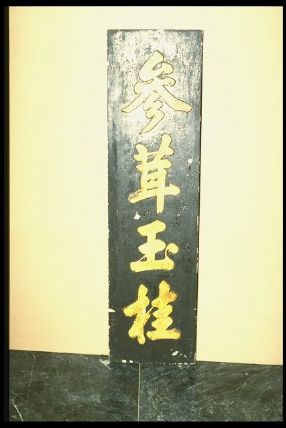As COVID-19 deaths spiked in 2020, Suzanne Firstenberg’s public art installation "In America: How could this happen…"
History Explorer Results (9)
Related Books (0)

Grade Range:
8-12
Resource Type(s):
Reference Materials
Date Posted:
12/30/2020
“Lena Richard was an African American chef who built a culinary empire in New Orleans during the Jim Crow era. She reshaped public understanding of New Orleans’ cuisine by showcasing and celebrating the black roots of Creole cooking in a time when pervasive racial stereotypes surrounded the food

Grade Range:
Resource Type(s):
Artifacts
Date Posted:
4/25/2018
Made in a San Diego sign shop, this metal menu board formed one side of a speaker box at a Jack in the Box drive thru restaurant. Drivers approached the menu, made their selections, and proceeded to the speaker box to place their orders. This menu is from the early 1960s and features an 18-cent h

Grade Range:
K-12
Resource Type(s):
Artifacts
Date Posted:
4/16/2018
Since the 1950s, demand has soared in the United States for cookbooks featuring diverse ethnic cuisines. Reflecting a heightened interest in foods and flavors from various cultures, the explosion of ethnic cookbooks—and ethnic restaurants and markets—serves to educate the general public while

Grade Range:
K-12
Resource Type(s):
Artifacts
Date Posted:
3/27/2018
Many Chinese men travelled to the United States and became gold miners following the discovery of gold in California in 1849. Woks such as this one were made in China, but brought to California in the 1800s and used by Chinese immigrants. As the mass influx of travelers arrived from a variety of

Grade Range:
K-12
Resource Type(s):
Artifacts
Date Posted:
4/4/2016
By 2013, McDonald’s signs could be found in all 50 states as well as approximately 120 countries. This sign was made in the U.S.A. for use in Japan. While the writing is in Japanese, the sign remains instantly recognizable due to its color scheme and signature golden arches. Not only the look o

Grade Range:
K-12
Resource Type(s):
Artifacts, Primary Sources
Date Posted:
5/6/2010
This sign was purchased by a North Beach second-hand shop from a proprietor in the neighboring Chinatown district of San Francisco. It is said to date from between 1890 and 1910. If that is so, the sign’s survival is quite miraculous: The 1906 earthquake in April of that year caused much damage

Grade Range:
K-12
Resource Type(s):
Artifacts, Primary Sources
Date Posted:
12/31/2009
As the “Millennium Bug” gained media attention, some businesses used the hype to market special millennium foods. From cars to breakfast cereal, companies like the Figueroa Brothers, Inc., cashed in on the Y2K name. This bottle once contained Y2K Millennium Meltdown ¿R-U-Ready? hot sauce, a

Grade Range:
K-12
Resource Type(s):
Artifacts, Primary Sources
Date Posted:
7/8/2009
In the 1950s, the station wagon became a staple of America's new suburban landscape and a ubiquitous extension of the suburban home. This car reveals how one family adopted a mobile, active lifestyle and how station wagons shaped family life.
Between the 1920s and 1940s, station wa

Grade Range:
5-12
Resource Type(s):
Artifacts, Primary Sources
Date Posted:
6/10/2009
Diner's Club was one of the earliest issuers of credit cards beginning in 1950. The convenience and security they came to represent transformed payment methods and later blossomed into one of the primary mechanisms for purchasing goods and services for customers. They also became a device for tra









